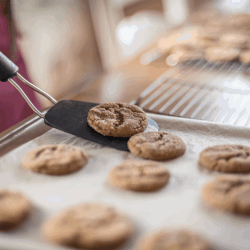From friendship gifts to treating a sugar tooth at 3 am in the night, there is little that a classic cookie cannot do. Thus, spending hours on a perfect batch of chocolate chip cookies seems like a worthwhile activity. The question is, how to get them right each time? More importantly, how big should we make the cookies? If that is what you are wondering, let us find out!
To make a perfect size cookie, scoop 1 inch balls from the cookie dough. The diameter of your cookie will depend on the size of the scoop. A medium-size one equals almost two tablespoons and will yield a cookie that is 3 inches in diameter. If you use a smaller one, this value should be 2 inches or less. Moreover, a classic cookie is about ¼ inches thick with a subtle rise in the middle.
So, now we have some information on the standard size of cookies. Of course, there is still a lot to cover. There are ways others techniques you can use to ensure a perfect batch of cookies. If you want to know this and more, keep reading ahead.

How Do You Make The Perfect Cookie Size?
To make perfect-sized cookies, you must evaluate every component of the cookie dough and the baking process. Weigh out the pros and cons of all the alternatives and make the right choice.
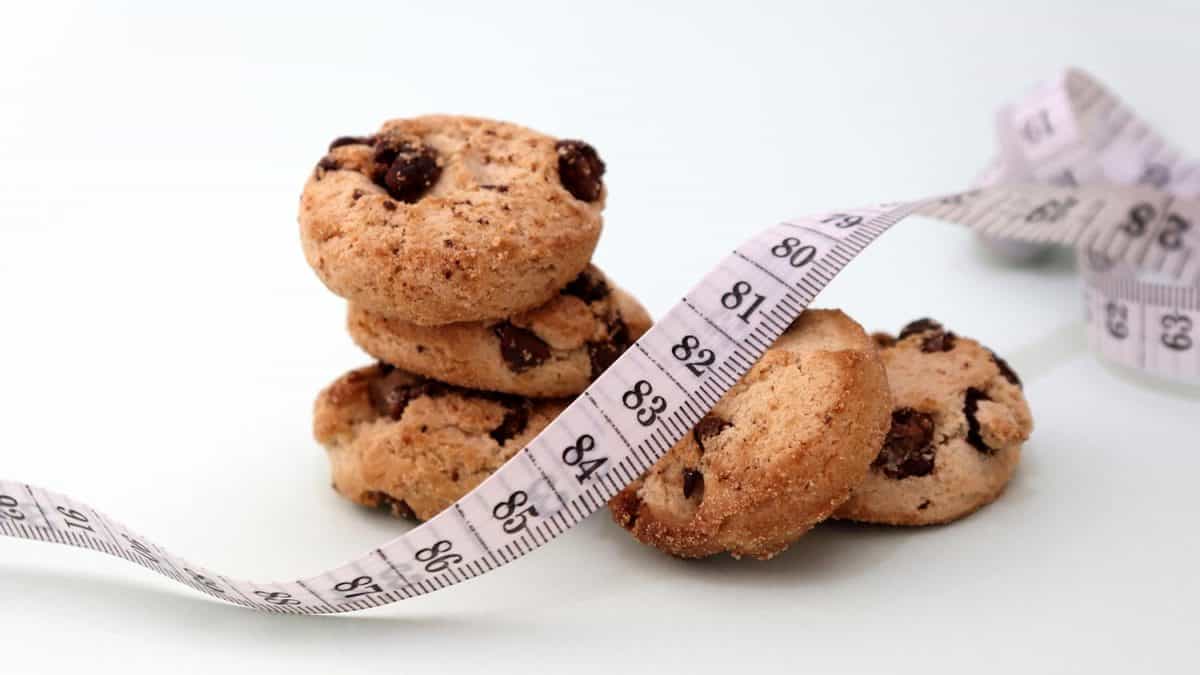
When making cookies, many parameters are often overlooked and deemed insignificant. These parameters even include the choice of instrument for scooping the dough.
The following is a detailed guide on how different factors affect your cookie size and how to deal with each.
The Right Kind of Butter
Whether you choose the creaming method or melting butter, the ingredient you go with shouldn’t be influenced by what is easy. Neither does it depend on the quality of your butter. In fact, this choice of fat content determines the very structure of your cookie.
Softened Butter
Softened butter soaks sufficient moisture to give a uniform consistency to the batter. During mixing, the molecules envelop the protein to prevent any gluten development. Gluten hinders the spread of cookies. The crystallized molecules also work to blend the ingredients, bringing them to a structure.
Thus, expect a cookie right in character to your required size or maybe half an inch smaller with the creaming method. However, using butter below the ambient temperature range will result in broad and flat cookies.
Melted Butter
When you pour melted butter into cookie dough, remember that it is no more the binding component of your recipe. It can provide for the taste, fat, and nutrients, but the liquid nature can do nothing for the structure of the cookies.
Thus, expect a relatively outspread batch with melted butter as compared to the other. If you substitute melted butter for a recipe that called for softened, expect a 1/4 inch or more increase in the diameter of the final results.
The Right Temperature
With baking, it is not only the temperature of the oven that makes all the difference but also the temperature of the dough itself. Let us explore how.
Oven Temperature
Each recipe you come across must call for a 340-350°F oven temperature. This amount of heat will give you an evenly baked cookie. It will be crisp on the outside and juicy on the inner.
As you increase the oven temperature, your cookie size will shorten. Direct exposure to high heat will cause it to solidify quickly, maybe even rock-solid. Thus, it reduces the spread. This situation will also result in a relatively thicker cookie.
Steady baking at low temperature causes the dough ball to spread excessively. Your cookie will be overly thin, undercooked, and chewy.
Dough Temperature
Allow your ingredients time to hydrate and blend before popping in the oven. Ideally, let the cookie dough chill in the refrigerator for 30 minutes to 24 hours. Then, make it rest at room temperature until pliable to bake. The dough will gain better structure this way and spread evenly.
The Right Baking Time
Suppose you put in the cookie dough at an accurate temperature. Yet, unless you choose a perfect baking time, you can not get the desired results. A common mistake is to let them in the oven until the edges are crisp and brown. If you do so, you will find that they are more brittle and may appear burnt.
The baking time depends on the intensity of the dough as well as its temperature. The cooler the dough, the more time you need to give it to spread at its own pace. Also, if your dough contains lots of mix-ins and sugar, don’t rush the process either.
For an ideal temperature and dough consistency, 8-12 mins are necessary to get perfect golden chocolate chip cookies. This timeframe is sufficient time for the dough to spread out, gain texture and incorporate flavor.
Baking Tips
Do not change the temperature of the oven simply because the dough takes long. Setting a higher temperature will not make the baking process quick. However, prolonged exposure to a steady temperature will.
If you put frozen dough right in the oven, it will require a higher temperature to cook. If you skip the step altogether, the cookie will lack uniformity and texture as it did not get enough time to settle.
The Right Shape
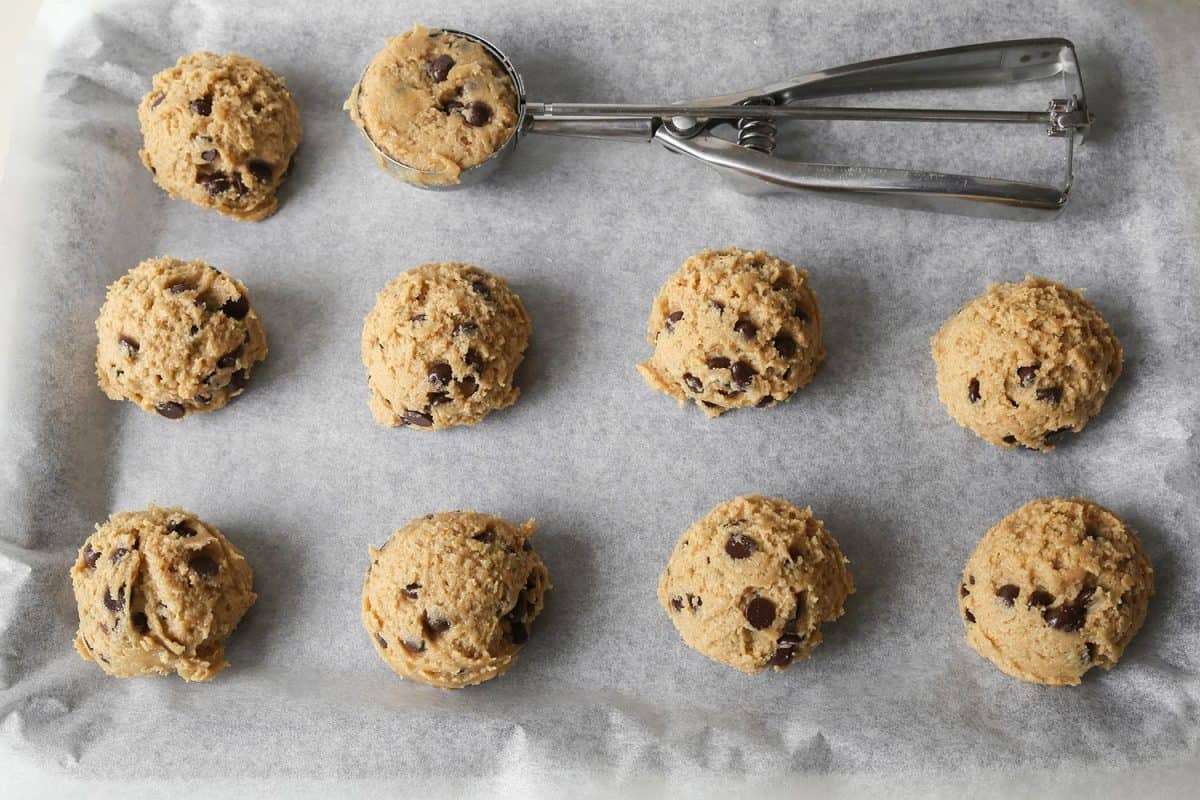
Round cookies are ideal for shaping. Hack your way to a perfect round cookie by using a cookie cutter. To use one, roll up the dough and refrigerate at least an hour before. Since you will not be giving the dough endless space to expand, you’d like it to be rigid in the structure before cutting.
Once cooled, roll it out on a flat surface. This is a crucial step as the thickness of the cookie will depend on your rolling technique. At least, keep a ¼ inch thickness or as per your recipe’s requirements.
The Right Portions
Portioning uniform cookies is crucial. Not only does it help achieve the required diameter, but it also makes for an even-sized batch of cookies.
While cookie cutters are great, some may not prefer their lack of room for spreading. For traditional drop cookies, a cookie scoop may also achieve an ideal round shape.
Cookie scoops are not generally associated with measurements in inches or tablespoons. They come in sizes like #10, #20, etc. The general ruling here is the smaller the size, the larger your scoop.
What Cookie Scoop Size Is Best?
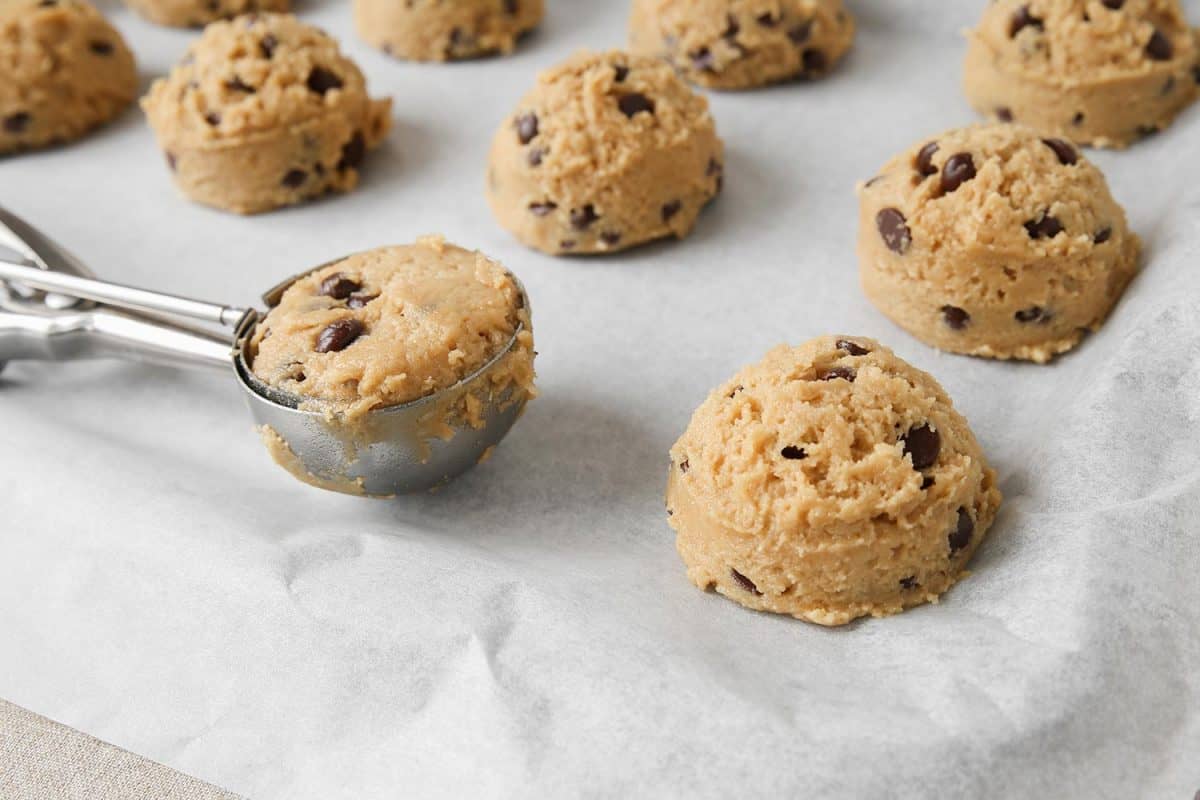
Thus, if you’d like to achieve a moderate size, a scoop between #20-30 would work perfectly. You can extend to as much as #100 and down to #6 as needed. Use a size chart to help you. Remember that cookie dough spreads when baked so, opt for one size greater than you need.
How Do You Scoop Out Chocolate Chip Cookies?
Scooping out chocolate chip cookies can be achieved by several methods depending upon the available instruments.
Cookie Scoop
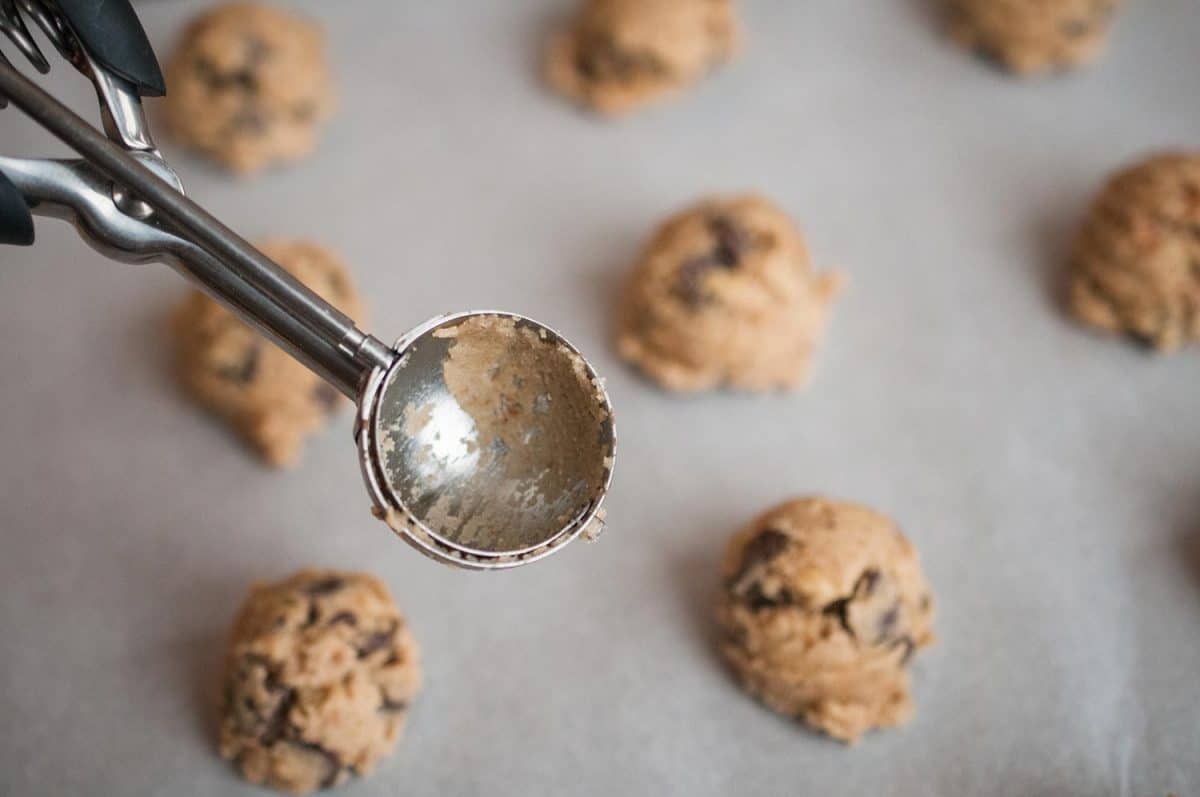
As mentioned before, choose a cookie scoop size. With the right size, this is the most accurate and clean method of scooping chocolate chip cookies. All you have to do is portion dough up to a uniform depth and lay it on the baking sheet using the spring release.
Spoon
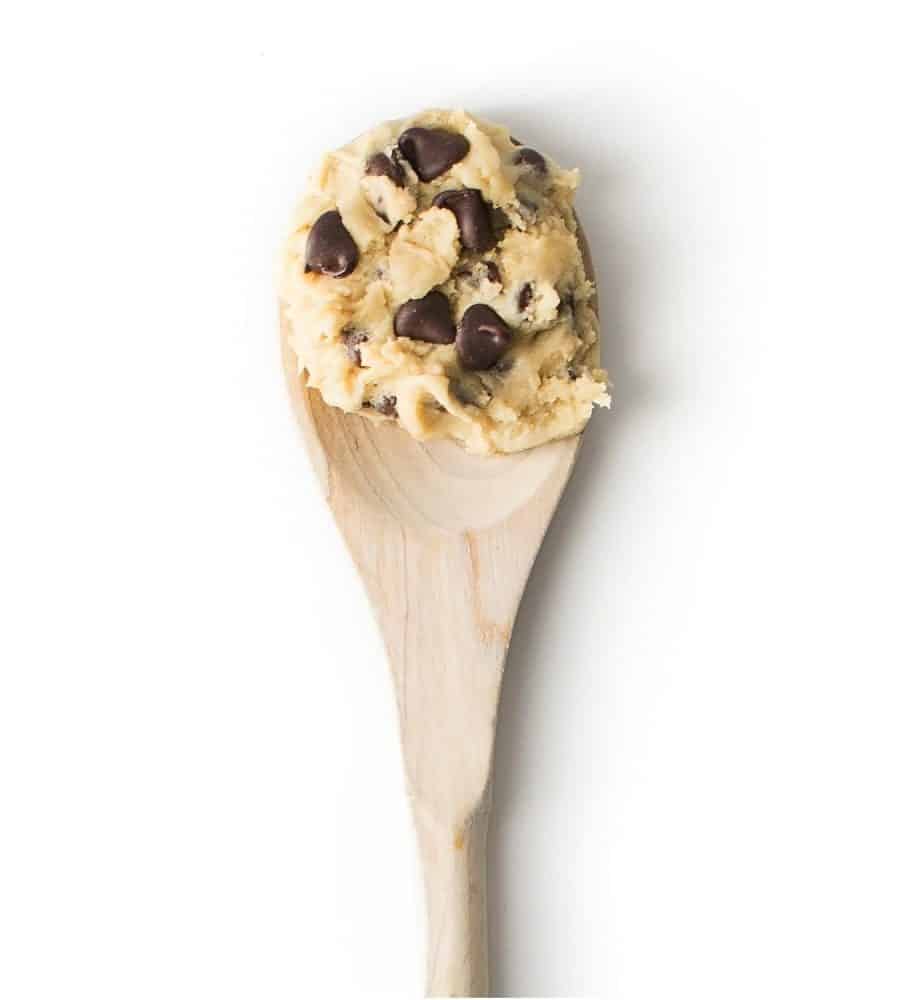
Spoons are accessible but lack the accuracy for portioning. Use a tablespoon and cover the base lightly with flour. You don’t want the dough to stick to it. Then, be careful to scoop out a consistent amount for each cookie. Drop it in your hand, roll it in a ball and let it rest.
Measuring Cup
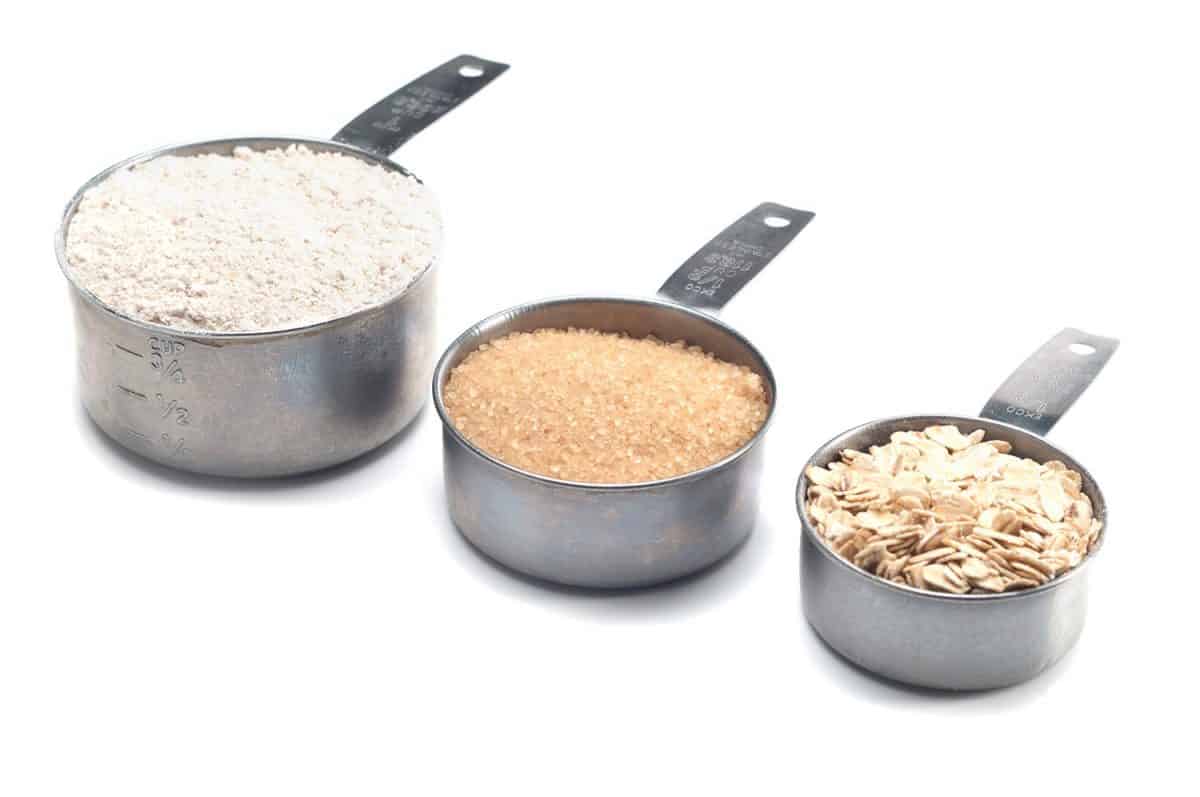
You may use a ¼ measuring cup to scoop, but it will provide big and thicker cookies. Lightly spray it with oil or sprinkle it with flour before application. Roll the portioned dough into a ball. You may choose to divide each portion into two halves for a relatively smaller size.
Miscellaneous Tips
- All white sugar cookies spread more and are thin and chewy. All-brown will give you a dense ball of dough. Always use one part of each sugar for the cookies.
- Butter can always be replaced with oil but make sure you freeze the dough. Oil lacks binding power and needs to solidify before baking.
- Never substitute baking powder for baking soda. A balanced cookie depends on the soda to help it rise slightly but extend more towards the sides.
- Use light-colored sheets on high-rate aluminum baking pans for even heat transfer.
- Let cookies settle on the tray before moving them to another spot.
How Do You Make Chocolate Chip Cookies Thicker?
If you prefer thicker cookies, there are some tips to help you accomplish this goal.
- Refrigerate the cookie dough. It should be left in the fridge for an hour at least. However, it is better if it is in there overnight.
- If you are using butter, refrigerating is an essential step. Butter has a low melting point. If you want the best of both worlds, you can use half butter and shortening to retain flavor and density.
- When you are forming the dough into balls, make them tall. If you focus on making them round instead, they are more likely to flatten.
Final Takeaway
You now have the secret! All that stands between you and a perfect size chocolate chip cookie is an informed choice of ingredients, temperature, and instruments. Good luck with your next batch!
Before you go, do you have other cookie concerns? What if you noticed that you do not have a cookie sheet? We can give you some alternatives! For more information, check out our post here.
What if you do have one and now need to clean stains off of it? We can also help. For more information, check out our post here. Until next time!



